Layer #3: Light Up The Virtual Training Chat Box
This concept is seemingly simple, yet it’s our number one way to get the training room engaged. It helps us get to know them. It sparks conversation from the first moment. And it’s a hugely efficient learning channel because dozens of people can share insights at the same time. Unlike “talking over each other” that would happen in the same physical room, in chat, the more people participate at the same time, the more deep and lively the insights become.
Here are several ways we use the Chat function to move learning-conversations further:
- Get clear on career and leadership aspirations
- Narrow the virtual training content to their immediate situations
- Recognize opportunity through blind spots and superpowers
- Face hot button issues in a safe environment with peers
- Leverage international representation to broaden knowledge and understand language barriers
- Relate to each other to build trust
- Share ideas to leverage the peer knowledge in the room
- Apply training concepts to their actual challenges and obstacles at work
- Use questioning flow to build depth
Read the actual chat conversations below to get a sense for in-session discussions. Many people watch videos to get a sense of our style, yet the chat conversations are even more revealing about the type of learning that can be enabled in a virtual setting. Note: in most cases, names are blurred to anonymize the examples.
1.Get clear on career and leadership aspirations
In this seemingly simple approach, you can see how they’re stepping back to reflect. Often, managers come into our program with an operational obsession. They want to be a good manager, yet they haven’t spent much time thinking about how they want to be remembered as a leader. This process allows them to tap into the inspirational and aspirational side of their career.
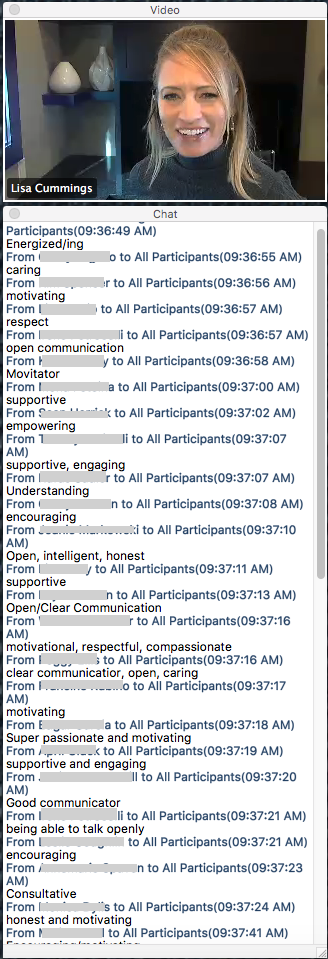
2. Narrow the virtual training content to their immediate situations
As you can see in this example, participants started their answers with a letter. When I’m using this technique, I’ll put options on the screen, such as, “Pick A, B, C, D, or E” and then comment from there. In sessions where there’s an overwhelming vote for one or two items, we can go deep on that part of the conversation because it’s most relevant to people in the room at that moment. This keeps the content in a highly relevant mode for them.
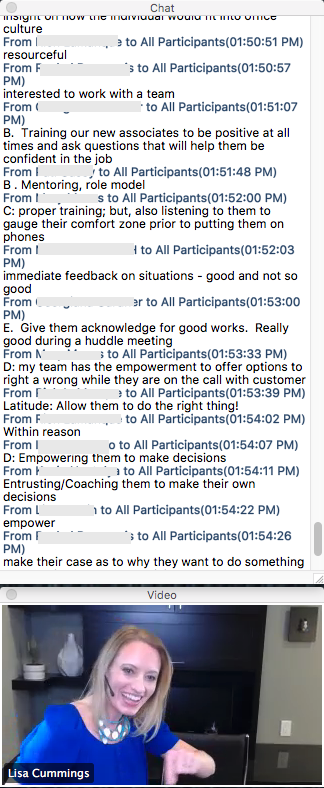
3. Recognize opportunity through blind spots and superpowers
In this example, it kicked off an important conversation about someone’s disappointment. Although you don’t see the rest of it in this screen shot, it was a deep and meaningful moment that brought self-awareness and confidence that didn’t exist in the session before. You can also see how participants were openly supporting each other and helping their superpowers get recognized and used.
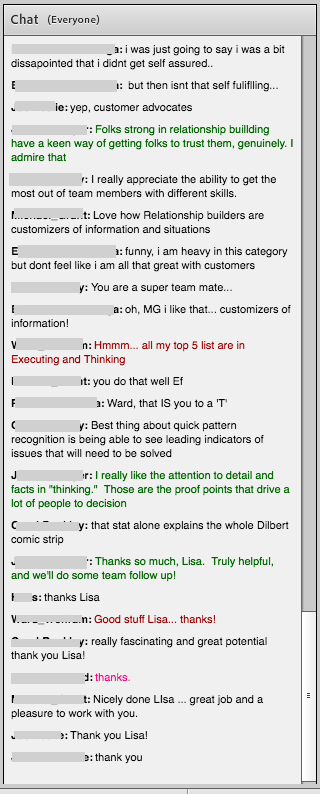
4. Face hot button issues in a safe environment with peers
Take a look at the comments in this chat example, and you’ll see a group of managers that is getting really honest with themselves and their impact on their team’s culture. In this one, they’re grappling with their behaviors that could set a less-than-optimal tone.

5. Leverage international representation to broaden knowledge and understand language barriers
In this example, you can see how I kicked off the event with their locations and an international business story. It allowed them to connect with locals because many of them didn’t know that people were joining from their home cities (which led them to create in-person, informal meet ups). It also created cultural networking and understanding. And from a facilitation perspective, it gives me clues about cultural values and potential language barriers. For example, when there’s an international audience, I strip out “Americanisms” (idioms), simplify the vocabulary choices, and slow down to give people time to respond because those with English as a 2nd or 3rd language will likely have to make a language translation before answering.

6. Relate to each other to build trust
This is an area that I model from the beginning. I let my guard down so that they will let their guards down. In the example you see on screen, they’ve “broken the 3rd wall” in that they’re talking about throwing something to me (through the camera lens). Those are the awesome moments in chat – where it feels like friends sitting around a coffee table, talking about where they want to take their leadership growth.
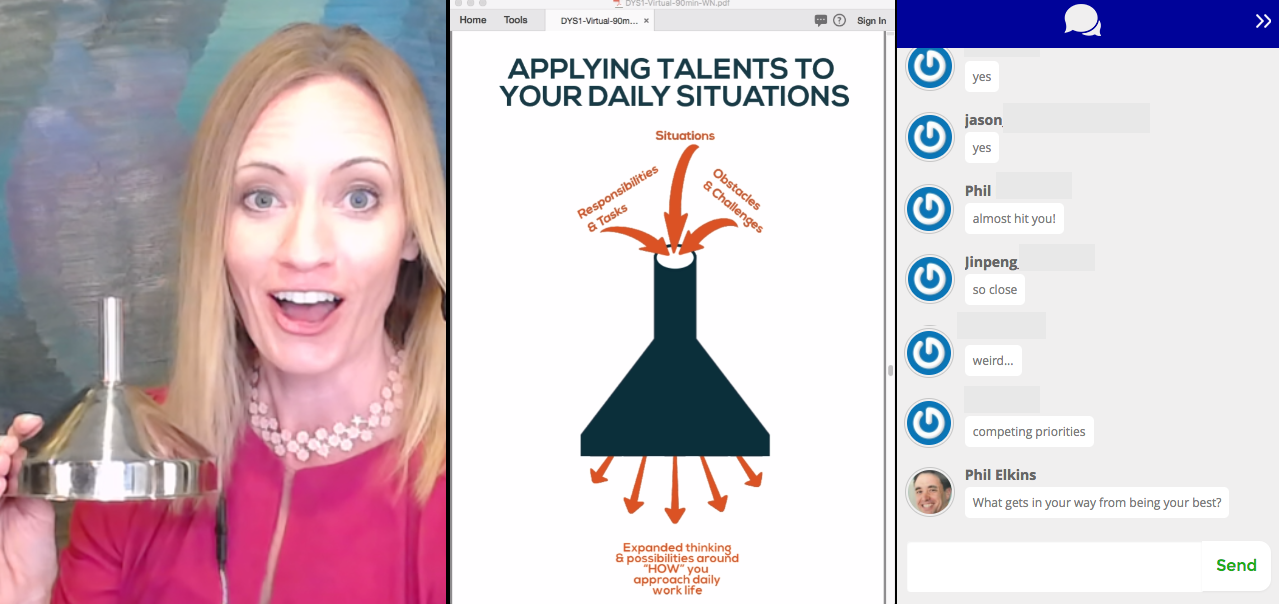
7. Share ideas to leverage the peer knowledge in the room
This is where people get to partner with each other based on what they can do to support each other. It’s where they leverage the talents “in the room” with people in the program. It’s also a place where they love to share tips with each other because it’s easy to share and there’s no stress attached to whether someone takes the advice or not.
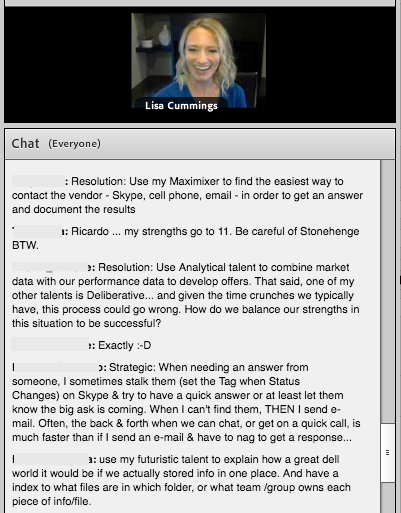
8. Apply training concepts to their actual challenges and obstacles at work
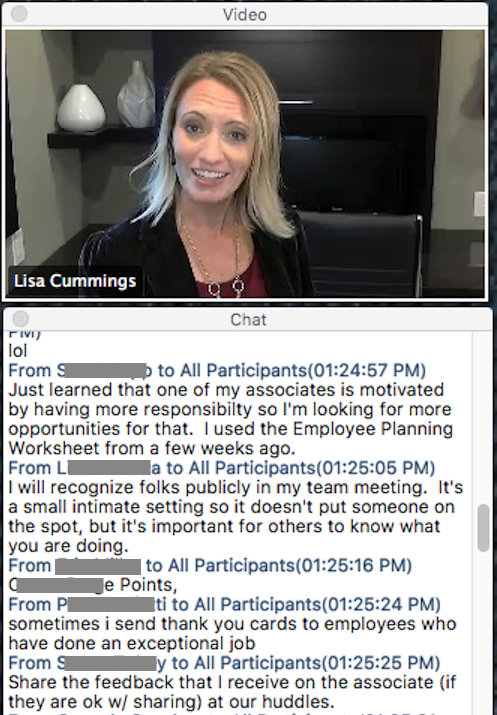
The Chat box is also a place of accountability and peer support.
I ask them to share what they’ve done so far that already works.
This helps them build on what already know how to do.
Then I ask them to make a commitment for how they’ll use these concepts back at the office.
From these chat conversations, we’ve had peer accountability groups form.
We’ve had friendships made.
And we’ve seen worksheets get applied with their teams.
The chat box is a wonderful place to build their capabilities beyond the facilitator’s suggestions.
They love hearing tips from each other, and they love seeing the simple ideas in another manager’s words.
9. Use questioning flow to build depth
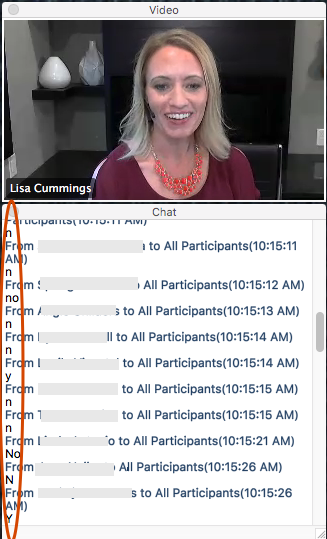
It seems counter-intuitive, yet we begin with a lot of closed-ended questions. These questions often require only one word to answer. In fact, as you can see in the screen shot, we even simplify it down to one letter answers by saying, “type Y for yes or N for no.”
That gets even the most skeptical or distracted participant to jump in. From there we build to one word. And then deep discussions. What happens is that they see the dozens of participants joining in and they perceive it as a place worth spending time.
It’s a version of FOMO (Fear Of Missing Out) that implies, “if you leave the screen to check email, you’re at risk for missing a bunch of great insights.” Look at the left side of the screen shot (with the orange circle) to see all of the Y/N answers from a simple question.
We immediately move to the next phase of questions, where they can quickly answer a closed-ended question with a 1-3 word answer. We often start with a question that has them imagining someone else (versus reflecting on themselves) they’ve worked with in the past. That way, they get a very concrete answer quickly.
When we make it easy to answer, they jump in. When you get participation in droves, then they’re open to the longer and deeper answers that come next. This “dip your toe in” approach also allows them to get a feel for other participants.
With global audiences, they also appreciate writing shorter answers so that they don’t have to spend as much time on translations.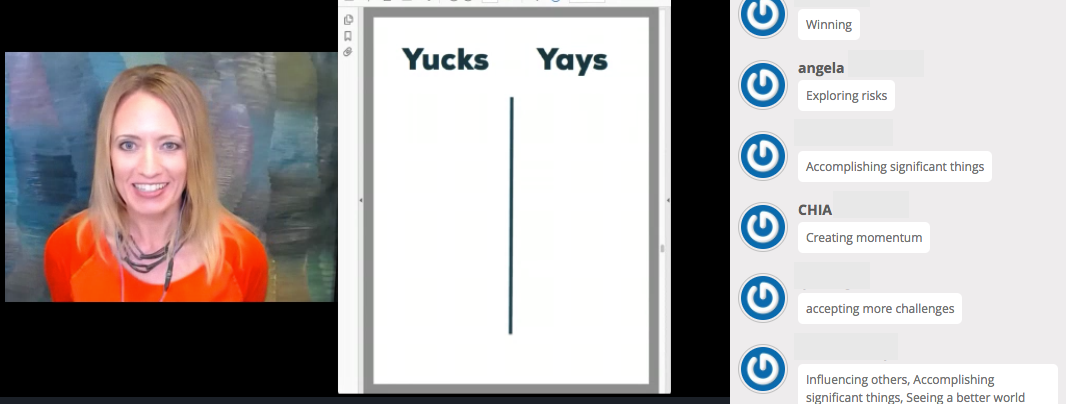

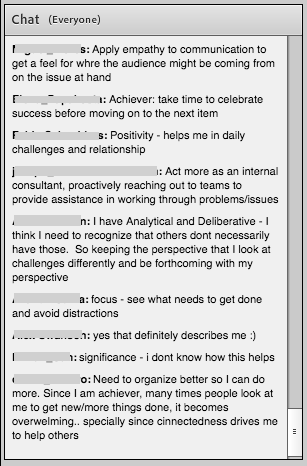
As you can guess, we also go deep. They get transparent. They get vulnerable. They think deeply about themselves.
Of course, you won’t likely get deep answers in the first minute (from the closed or skeptical people). That’s why we build to deeper reflections and answers.
You can see in this chat example that some answer relatively safely, yet others opened up deep issues, like an ongoing Deliberative/Analytical conflict. And things like the overwhelm (very last comment) that he used to blame on his leader. After the session, he felt fully accountable for the way he shows up at work, and how he tends to indicate that he’s always willing to take on more.
That’s it for my the chat box. It’s crazy to think that this list is ginormous, yet it is still not exhaustive. Be sure to catch the entire series by checking out the other 4 layers:

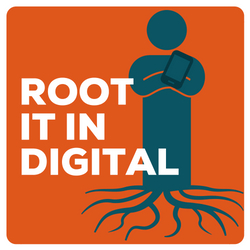


As an international speaker and facilitator, Lisa Cummings has delivered events to over 15,500 participants in 14 countries. You can see her featured in places like Harvard Business Publishing, Training Magazine, and Forbes. She specializes in virtual StrengthsFinder training for teams. When she’s not out spotting strengths in people, you’ll find her playing drums, rescuing dogs, or watching live music in Austin, TX. Her Top 5 StrengthsFinder Talents are: Strategic | Maximizer | Positivity | Individualization | Woo.

